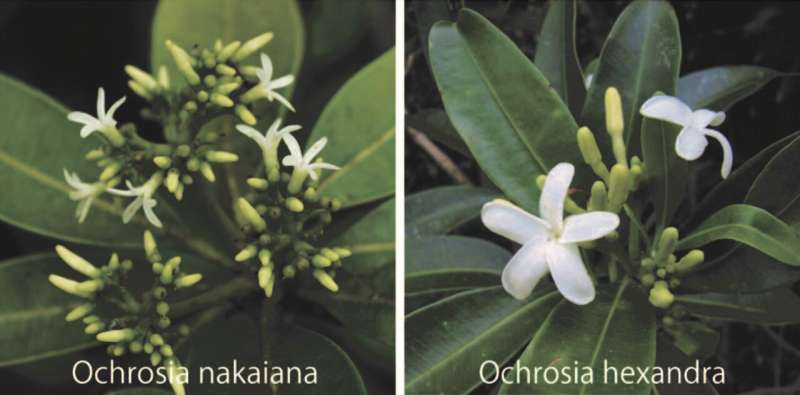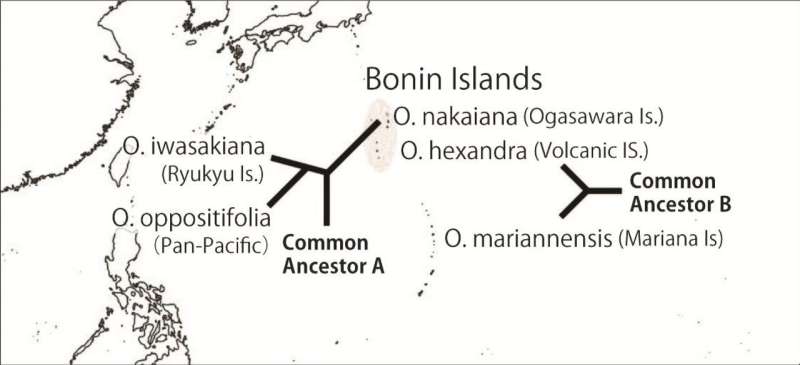The Ochrosia nakaiana and Ochrosia hexandra are of the same family of plants but have distinctly different origins due to the complexity of flora speciation and distribution. Credit: KyotoU/Koji Takayama
When classifying two species of the same flowering plant, the similarities and differences between them are considered.
Two Ochrosia species, O nakaiana and O hexandra, endemic to the Bonin island chain southeast of Japan, turn out to be kindred strangers.
The challenge of sampling from their entire distribution range, however, has prevented their phylogenetic profiles from being thoroughly evaluated for the purpose of elucidating their origins.
Now, a study by a team of researchers from Kyoto University has revealed that these two endemic species—O nakaiana and O hexandra—had distinctly different origins. Their study is based on molecular analysis of chloroplast samples of this genus taken from surrounding areas.
"Our understanding of speciation covering long distances across oceans and the resulting isolation following migration helps clarify how the Ochrosia species diversified," notes Koji Takayama.
It turns out that these two tree species had independent origins tracing back relatively recently to roughly one to two million years ago. The former possibly originated from Southeast Asia, New Caledonia, or other Pacific Islands, while Micronesia may lay claim to the origins of the latter.
Floral speciation and distribution of Ochrosia species are shown. Credit: KyotoU/Koji Takayama
The Bonin Islands are of volcanic origin and consist of two islands groups—the Ogasawara and Volcano groups—approximately 300 km apart.
"Our study demonstrates the complexity of floral speciation and distribution," the author says.
The team also found that the divergence time for O hexandra on the Volcano Islands was older than the geological formation time, indicating possible flaws in dating or sampling. According to Takayama, a further look at O mariannensis, a progenitor of O hexandra, on Mariana Island may provide a more accurate estimate and help shed more light on the origins of these species.
"For now, we are able to classify the Ochrosia varieties into fibrous-fruited and cavity-fruited types and cross-match O nakaiana and O hexandra with other congeneric species, enabling us to map the lineage of these two independent endemic species," Takayama concludes.
The research was published in Molecular Phylogenetics and Evolution.
More information: Hiroshi Noda et al, Multiple origins of two Ochrosia (Apocynaceae) species endemic to the Bonin (Ogasawara) Islands, Molecular Phylogenetics and Evolution (2022). DOI: 10.1016/j.ympev.2022.107455
Journal information: Molecular Phylogenetics and Evolution
Provided by Kyoto University

























